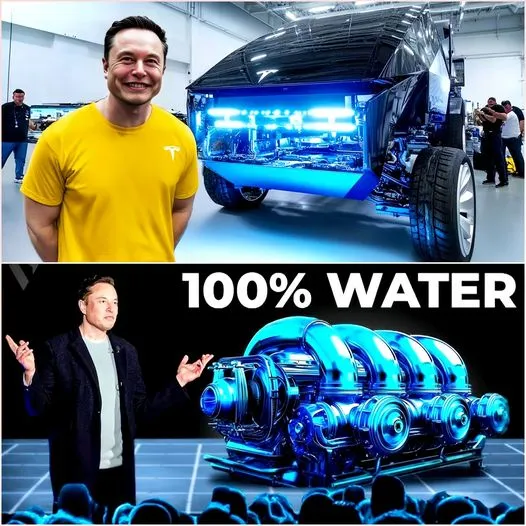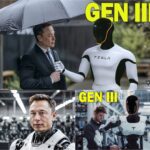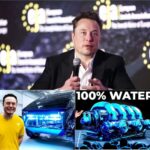In a groundbreaking development that has captured the world’s attention, Tesla CEO Elon Musk has announced the latest innovation: a water-powered engine. This revolutionary technology is expected to reshape the automotive industry, providing an alternative to traditional electric and fuel-powered vehicles. Musk, known for pushing the boundaries of technology, believes that this new engine could potentially surpass all existing car models in terms of efficiency, environmental impact, and cost-effectiveness.

Elon Musk’s vision for a water-powered engine aligns with Tesla’s commitment to reducing environmental impact while advancing cutting-edge technology. The concept is simple yet ambitious: to create an engine powered by a readily available resource—water. Unlike electric batteries, which require mining resources and complex infrastructure, water is abundant and renewable, making it an attractive option for sustainable energy.
“Imagine a world where cars are powered by water, producing zero emissions and reducing our dependence on fossil fuels entirely,” Musk said in a recent press release. “We’re on the verge of something historic.”
The mechanics behind the water engine involve advanced hydrolysis technology, where water is split into hydrogen and oxygen, generating energy through a controlled reaction. This process can create sufficient power to operate a vehicle without producing harmful emissions. Tesla’s engineers have been working to refine this technology, making it safe, efficient, and compatible with modern driving requirements.
Tesla’s water engine aims to use a closed-loop system, recycling water within the vehicle to maximize efficiency and minimize waste. By focusing on hydrogen fuel production through water, Tesla hopes to eliminate the need for extensive battery infrastructure, reducing the ecological footprint associated with traditional electric vehicles.
One of the most promising aspects of the water engine is its potential to surpass traditional car engines. Here’s how Tesla’s new technology could outperform both electric and combustion engines:
- Efficiency: The water engine’s energy production is expected to be far more efficient than current internal combustion engines, and it could even compete with high-performing electric vehicles.
- Environmental Impact: This engine is projected to have zero harmful emissions, making it a cleaner alternative than fuel-powered engines.
- Cost-Effectiveness: By reducing dependency on mined resources like lithium and cobalt, Tesla aims to bring down manufacturing costs, potentially making water-powered cars more affordable in the long run.
In typical Musk fashion, the announcement of Tesla’s water engine was accompanied by a live demonstration. Attendees witnessed the first prototype in action, demonstrating the engine’s power and efficiency. The prototype, although still in its early stages, displayed impressive performance, accelerating smoothly and operating with minimal noise. Musk emphasized that Tesla plans to refine this technology further before it’s ready for mass production but was optimistic about its potential to disrupt the automotive industry.
“Our goal is to create a future where every car is a clean energy powerhouse,” Musk stated. “This isn’t just about innovation; it’s about ensuring a sustainable future for generations to come.”
While the water engine presents exciting possibilities, it also faces significant challenges. Creating a stable, long-lasting system requires intensive research and innovation. Safety concerns, regulatory approvals, and infrastructure development are all hurdles Tesla will need to overcome. Furthermore, making this technology accessible to the general public will require strategic pricing, which Tesla is already considering.
If successful, the water engine could herald a new era in automotive history, leading the way toward a cleaner, more sustainable world. With Elon Musk’s ambitious vision and Tesla’s track record of innovation, the prospect of a water-powered future seems closer than ever. As the world watches Tesla’s progress with anticipation, this breakthrough may become one of the defining moments in the quest for a sustainable automotive industry.
































